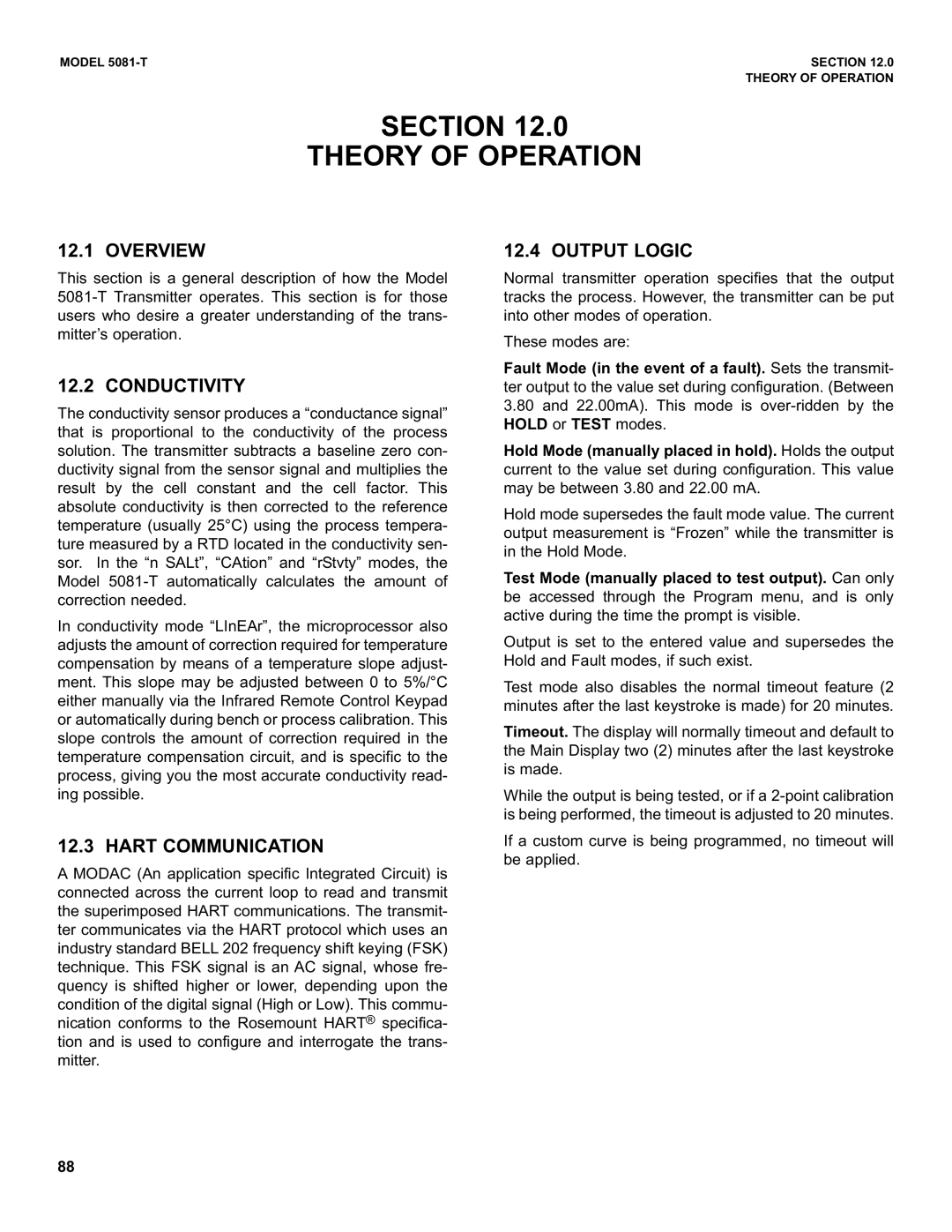MODEL | SECTION 12.0 |
| THEORY OF OPERATION |
SECTION 12.0
THEORY OF OPERATION
12.1 OVERVIEW
This section is a general description of how the Model
12.2 CONDUCTIVITY
The conductivity sensor produces a “conductance signal” that is proportional to the conductivity of the process solution. The transmitter subtracts a baseline zero con- ductivity signal from the sensor signal and multiplies the result by the cell constant and the cell factor. This absolute conductivity is then corrected to the reference temperature (usually 25°C) using the process tempera- ture measured by a RTD located in the conductivity sen- sor. In the “n SALt”, “CAtion” and “rStvty” modes, the Model
In conductivity mode “LInEAr”, the microprocessor also adjusts the amount of correction required for temperature compensation by means of a temperature slope adjust- ment. This slope may be adjusted between 0 to 5%/°C either manually via the Infrared Remote Control Keypad or automatically during bench or process calibration. This slope controls the amount of correction required in the temperature compensation circuit, and is specific to the process, giving you the most accurate conductivity read- ing possible.
12.3 HART COMMUNICATION
A MODAC (An application specific Integrated Circuit) is connected across the current loop to read and transmit the superimposed HART communications. The transmit- ter communicates via the HART protocol which uses an industry standard BELL 202 frequency shift keying (FSK) technique. This FSK signal is an AC signal, whose fre- quency is shifted higher or lower, depending upon the condition of the digital signal (High or Low). This commu- nication conforms to the Rosemount HART® specifica- tion and is used to configure and interrogate the trans- mitter.
12.4 OUTPUT LOGIC
Normal transmitter operation specifies that the output tracks the process. However, the transmitter can be put into other modes of operation.
These modes are:
Fault Mode (in the event of a fault). Sets the transmit- ter output to the value set during configuration. (Between
3.80and 22.00mA). This mode is
Hold Mode (manually placed in hold). Holds the output current to the value set during configuration. This value may be between 3.80 and 22.00 mA.
Hold mode supersedes the fault mode value. The current output measurement is “Frozen” while the transmitter is in the Hold Mode.
Test Mode (manually placed to test output). Can only be accessed through the Program menu, and is only active during the time the prompt is visible.
Output is set to the entered value and supersedes the Hold and Fault modes, if such exist.
Test mode also disables the normal timeout feature (2 minutes after the last keystroke is made) for 20 minutes.
Timeout. The display will normally timeout and default to the Main Display two (2) minutes after the last keystroke is made.
While the output is being tested, or if a
If a custom curve is being programmed, no timeout will be applied.
88
